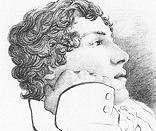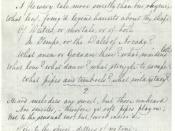The poetry of John Keats contains many references to physical things, from nightingales to gold and silver-garnished things, and a casual reader might be tempted to accept these at face value, as simple physical objects meant to evoke a response either sensual or emotional; however, this is not the case. Keats, in the poem Ode Upon a Grecian Urn, turns the traditional understanding of physical objects on its head, and uses them not solid tangible articles, but instead as metaphors for and connections to abstract concepts, such as truth and eternity. In the poem, Keats dismisses the value of physical things as only corporeal for what he feels is more substantial and lasting, the indefinite and abstruse concepts behind them.
It would be beneficial to gain a historical perspective on the poem. Ode Upon a Grecian Urn was written at the height of Keats' creative output, in May of 1819; in this same month he wrote the Ode Upon a Nightingale and the Ode Upon Melancholy.
It is worth noting that two of the subjects of these odes are physical things, because Keats is chiefly remembered for his writing about physical, sensual things. Yet he betrays this attempt at classification; the Grecian urn is more than just an ancient piece of pottery which Keats values because it has in some ways defeated time ("when old age shall this generation waste / thou shalt remain. . . ", lines 46-47) and because it will never cease depicting youth and gaiety (". . .that cannot shed / Your leaves, nor ever bid the Spring adieu", lines 21-22). Keats values this urn because of the message it conveys (directly or indirectly, a topic which will reviewed later), that beautiful things are the embodiment of truth ("Beauty is truth, truth beauty - that...


